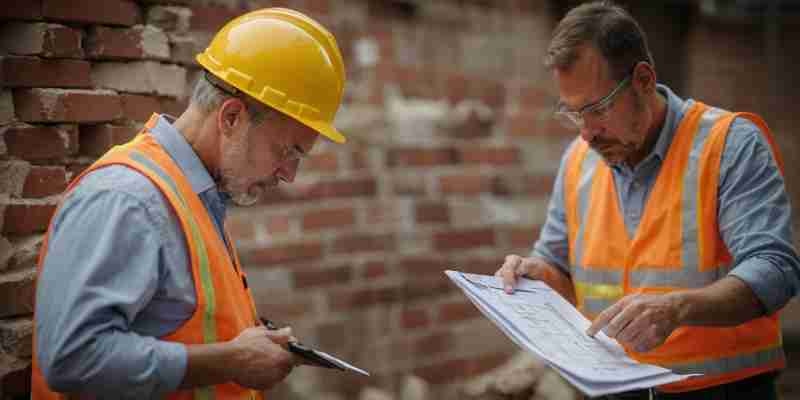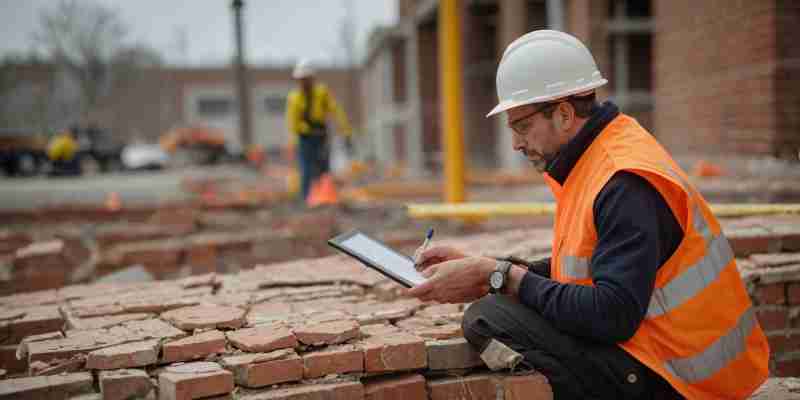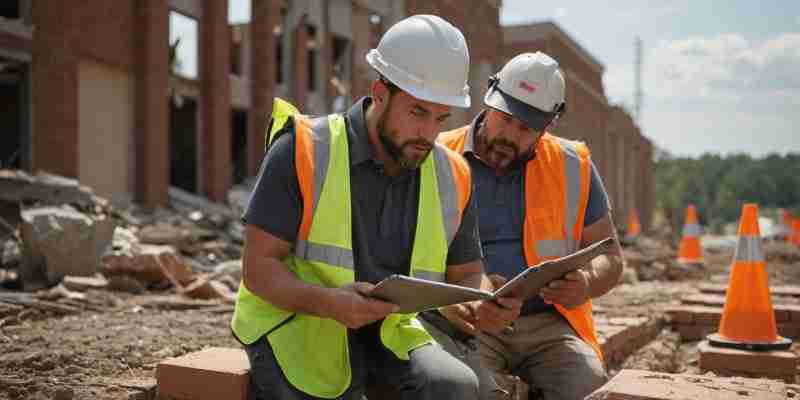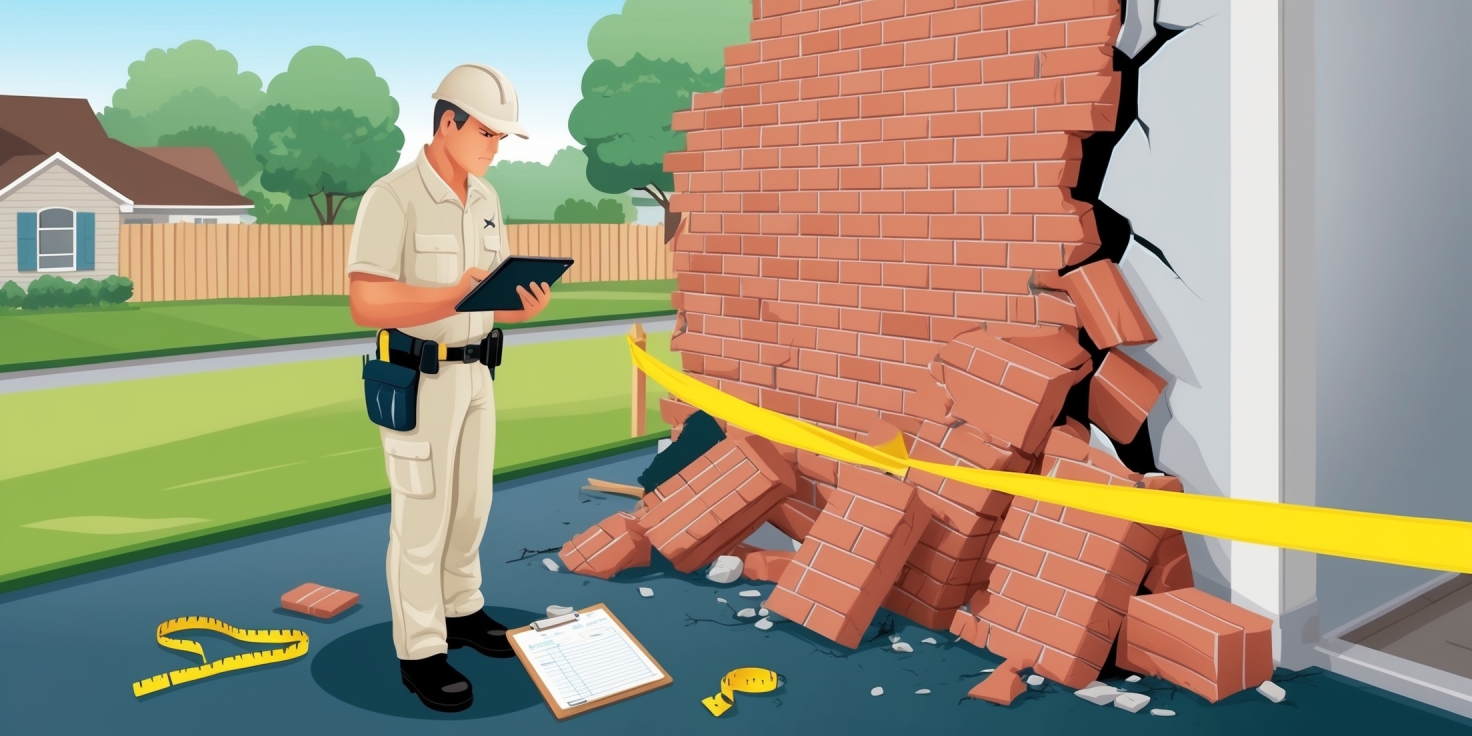When a wall collapses on your property, the aftermath can be overwhelming — from ensuring safety to navigating the complexities of insurance claims. Knowing how to document damage from a collapsed wall is crucial for securing the compensation you deserve. At LMR Public Adjusters, South Florida’s premier public adjusters, we specialize in helping property owners like you maximize insurance claims through expert guidance and a personalized, dedicated team. Proper documentation not only strengthens your claim but also speeds up the recovery process. Whether the wall collapse is due to structural failure, weather damage, or another cause, capturing detailed evidence, understanding your policy, and working with experienced public adjusters can make all the difference. In this guide, we’ll walk you through the essential steps to accurately document wall damage and protect your investment.
Assess the Area for Safety Before Documentation
Before you begin documenting the damage caused by a collapsed wall, it is critical to ensure the area is safe for entry. Structural collapses can pose serious risks, including falling debris, unstable foundations, and exposed electrical wiring. According to the Occupational Safety and Health Administration (OSHA), over 20% of workplace fatalities in construction are due to structural failures and unsafe environments. This highlights the importance of prioritizing safety before any documentation process begins.
Start by visually inspecting the surroundings from a safe distance. If there are signs of further collapse or hazards like gas leaks or water damage, evacuate the area immediately and contact emergency services. It’s advisable to wear protective gear such as hard hats, gloves, and safety boots when approaching the site.
“Safety should always come first. Never attempt to document damage in an unstable environment without proper precautions.”
If you’re unsure about the safety of the structure, consult a licensed contractor or structural engineer before proceeding. They can assess the integrity of the remaining structure and confirm whether it’s safe to enter.
Here are a few examples of what to look for during your initial safety assessment:
- Cracks or shifts in surrounding walls or ceilings
- Exposed electrical wires or broken plumbing
- Unusual odors indicating gas leaks or mold
For more guidance on handling property damage, visit our pages on property claims and home damaged situations. You can also explore our expert advice on related issues like wind damage and mold damage.
For additional safety tips and resources, refer to the official OSHA website: https://www.osha.gov/.
Take Clear and Detailed Photographs
When documenting damage from a collapsed wall, capturing clear and detailed photographs is essential for a successful insurance claim. Begin by taking wide-angle shots to show the overall extent of the damage and its location within the property. Then, move closer to capture high-resolution images of specific cracks, debris, and structural issues. Be sure to photograph the wall from multiple angles and include any surrounding areas that may have been affected, such as flooring, ceilings, or nearby furniture.
Use natural lighting whenever possible, and avoid blurry or dark images that could obscure important details. Including a ruler or another object for scale can help adjusters understand the size and severity of the damage. Don’t forget to document any exterior damage if the collapse affected outer walls or nearby structures.
It’s also helpful to take photos of the property before the damage occurred, if available, to provide a clear comparison. These images can support your claim and demonstrate the extent of the loss. For more guidance on handling property-related incidents, visit our section on property claims or learn more about how we assist homeowners by exploring our home damaged services. Proper photographic documentation not only strengthens your claim but also speeds up the recovery process.
Record the Date, Time, and Weather Conditions

When documenting damage from a collapsed wall, it’s essential to accurately note the date, time, and weather conditions at the moment the incident occurred. This information provides critical context that can support your insurance claim and help establish the cause of the collapse. For example, if the wall fell during a heavy storm or high winds, this could indicate weather-related damage, which may be covered under your policy. Be as specific as possible—include the exact time, the type of weather (e.g., rain, wind, lightning), and any unusual environmental factors.
Taking photos or videos with timestamps can further strengthen your documentation. If possible, capture local weather reports or alerts from the day of the incident as additional evidence. This level of detail can be especially helpful when working with a public adjuster to assess the full extent of your loss.
Understanding how to properly document such events can make a significant difference in the outcome of your claim. If you’re unsure about the process, consider visiting our FAQ page for answers to common questions or learn more about how we assist with property claims. Proper documentation is the first step toward a fair and timely resolution.
Create a Written Description of the Damage
When documenting damage from a collapsed wall, creating a clear and detailed written description is essential. This written account serves as a crucial piece of evidence for insurance claims and helps public adjusters and contractors understand the extent of the damage. Begin by noting the date and time the collapse occurred, along with any events that may have contributed to it, such as recent storms, construction nearby, or visible structural weaknesses.
Describe the location of the wall within the property and specify whether it was an interior or exterior wall. Include details about the materials used in the wall—such as brick, drywall, or concrete—and the condition they were in before the collapse. Mention any visible signs of damage, including cracks, water stains, or mold, which may indicate underlying issues. If the collapse caused damage to other parts of the property, such as flooring, furniture, or electrical systems, be sure to include those in your report.
It’s also helpful to reference any previous incidents or repairs related to the wall. This context can support your claim and provide insight into recurring issues. For more guidance on handling such situations, visit our property claims page or explore our blog for expert tips. A well-documented written description strengthens your case and ensures a smoother claims process.
Gather Witness Statements if Available

When documenting damage from a collapsed wall, gathering witness statements can significantly strengthen your insurance claim. Witnesses—such as neighbors, tenants, or passersby—can provide firsthand accounts of the incident, including what they saw, heard, or experienced. Their testimonies can help establish the timeline of the collapse, identify potential causes, and confirm the extent of the damage. Be sure to collect detailed statements that include the witness’s full name, contact information, and a clear description of what they observed. If possible, record their statements or have them write and sign a written account.
Witness statements are especially valuable when the cause of the collapse is disputed or unclear. They can also support your claim if the insurance company questions the severity or timing of the damage. In addition to photos and structural assessments, these statements offer a human perspective that can validate your documentation.
If you’re unsure how to proceed with collecting or presenting this information, consider consulting a professional. Our team at LMR Public Adjusters has extensive experience in handling complex property claims and can guide you through the process. Whether the damage occurred in a residential or commercial property, we’re here to help ensure your claim is properly supported and fairly evaluated. For more insights, visit our blog for expert tips and real-life case studies.
Preserve Any Physical Evidence

After a wall collapse, preserving physical evidence is crucial for supporting your insurance claim and ensuring a fair settlement. Avoid removing or altering any debris until it has been thoroughly documented and inspected. Take detailed photographs and videos of the damage from multiple angles, including close-ups of cracks, broken materials, and any surrounding structural impact. These visuals serve as vital proof of the extent and cause of the damage.
If possible, keep any broken pieces of the wall, such as bricks, drywall, or insulation, in a safe place. These materials may be needed for further inspection by your insurance adjuster or a structural engineer. Additionally, document any related damage to nearby areas, such as flooring, furniture, or electrical systems, which may have been affected by the collapse.
It’s also helpful to gather any maintenance records, repair history, or previous inspection reports that could support your case. These documents can demonstrate that the collapse was sudden and not due to neglect. For more guidance on handling property damage, visit our page on property claims or explore our resources for commercial properties.
Preserving evidence not only strengthens your claim but also helps public adjusters and insurance professionals assess the full scope of the damage accurately. Acting promptly and carefully can make a significant difference in the outcome of your claim.
Contact Relevant Authorities or Insurance Providers
After documenting the damage from a collapsed wall with photos, videos, and written notes, the next critical step is to contact the appropriate authorities and your insurance provider. Prompt communication ensures that your claim is processed efficiently and that safety concerns are addressed immediately. Start by notifying your local building or code enforcement office to report the structural damage. They may need to inspect the site to determine if the area is safe or if further action is required.
Next, reach out to your insurance company to initiate the claims process. Provide them with all the documentation you’ve gathered, including images, repair estimates, and any official reports. This will help streamline your claim and reduce delays. If you’re unsure about the process or feel overwhelmed, consider consulting with experienced professionals who specialize in property claims. They can guide you through the necessary steps and help you maximize your settlement.
For homeowners and business owners alike, understanding your policy and knowing your rights is essential. If your home or business has suffered structural damage, our team at LMR is here to help. Learn more about how we assist with commercial properties and residential claims by visiting our website. Taking swift action and seeking expert support can make a significant difference in your recovery process.
In conclusion, properly documenting damage from a collapsed wall is a crucial step in ensuring a smooth insurance claim process and facilitating timely repairs. By taking clear photographs, writing detailed notes, preserving any related documents, and seeking professional assessments when necessary, you create a comprehensive record that supports your case. Remember, the more thorough your documentation, the better protected you are in resolving the situation efficiently. Taking the time to follow these steps can save you stress, time, and money in the long run.







